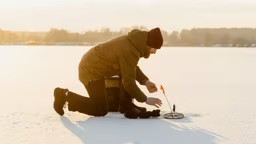
Just like their landlubber cousins, boats also have headlights and backlights to help avoid collisions. But unlike their road-bound cousins, boaters do not have the luxury of a spatial backplane in which to judge direction of another vessel.
Let me explain.
On the road – even on a very dark, winding, country road – you have trees, signposts, houses, even fields of corn stalks. Out on the water, you have water, then you have water; occasionally you have another vessel’s sound (which actually can be confusing as to its direction).In other words, it’s very difficult to tell the direction of a vessel without looking at its lights.
Every time I go boating at night I am amazed at the number of people who either have no navigational lights on – due to either forgetfulness or an equipment malfunction – or who have the wrong navigational lights on.
The rules are pretty simple. All boats must be able to display navigation lights between sunset and sunrise and in conditions of reduced visibility (fog, rain, haze, etc.). So states the National Department of Vessel Safety Checks. More specifically, boats that are 16 feet or longer must have:
- Properly installed, working red and green navigation bow lights capable of being seen 1/2 mile away.
- A 360-degree anchor light at the stern – capable of being lit independently from the red/green/white running lights – which can be seen from 1/2 mile away.

Photo Credit: istockphoto
A red and green bow light, visible for 1/2 mile, is required on boats 16 feet or longer. Green is always on the right, or starboard, side.
Sounds simple, but many things can go wrong, from the combo light not functioning to the white light not being positioned so that it can be seen from all sides by other vessels.
What navigation lights do.
Very importantly, they tell other boaters that you are either making way or at anchor. They give other boaters a conceptual idea of your direction via their own direction.
A lookout (remember every vessel is required to have a lookout) who sees a red light followed by a white light while looking over the bow can make the following assumptions: The boat is going from right to left (starboard to port) and, depending on distance, has the right of way.
If you see a white light in front of you, the vessel is either moving in the same direction or is at anchor.
Speaking of anchor lights: At night, a vessel that is at anchor and is not in a “special anchorage area,” must display an anchor light. An anchor light is a 360-degree white light. So, if you’re fishing and drifting, you should have on your navigation lights. If you’re fishing on an anchor, then it’s the anchor light.
In any event, before you leave the dock, make sure your lights are operational – for safety’s sake!
A lookout (remember every vessel is required to have a lookout) who sees a red light followed by a white light while looking over the bow can make the following assumptions: The boat is going from right to left (starboard to port) and, depending on distance, has the right of way.
If you see a white light in front of you, the vessel is either moving in the same direction or is at anchor.
Speaking of anchor lights: At night, a vessel that is at anchor and is not in a “special anchorage area,” must display an anchor light. An anchor light is a 360-degree white light. So, if you’re fishing and drifting, you should have on your navigation lights. If you’re fishing on an anchor, then it’s the anchor light.
In any event, before you leave the dock, make sure your lights are operational – for safety’s sake!
See also Tips & Tricks for Fall Fishing
Wayne Spivak is with the Public Affairs Department, United States Coast Guard Auxiliary.










